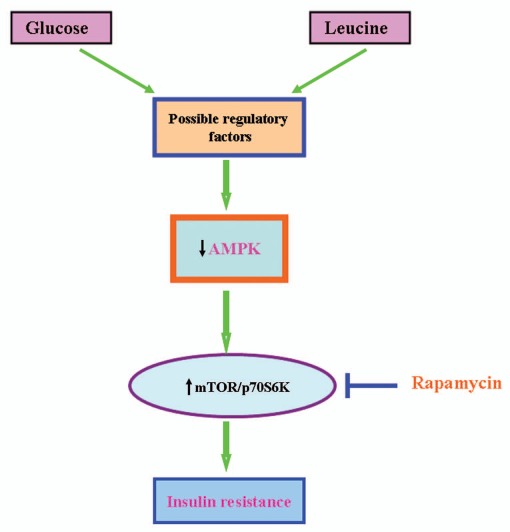Figure 1.
Hypothetical mechanisms by which excess glucose or leucine lead to decreased AMPK activity and, secondarily, mTOR/p70S6K activation. High glucose and leucine modulate several regulatory factors that could downregulate AMPK, including cellular energy and redox state. In addition, they could activate phosphatases and kinases that lead to decreased AMPK activity. Activation of mTOR/p70S6K can lead to insulin resistance by several mechanisms, including serine phosphorylation of key sites on IRS-1, activation of genes regulating glycolysis that could alter cellular energy and redox state, increased lipid synthesis47,48 and oxidative stress. The inhibition of insulin resistance by rapamycin strongly suggests that in the time frame studied here, changes in mTOR/p70S6K are likely the key factor responsible for insulin resistance. Finally, for reasons described in the text, we believe that decreased AMPK activity, is a major factor responsible for the activation of mTOR/p70S6K by nutrient excess; however, definitive proof of this is still lacking.

